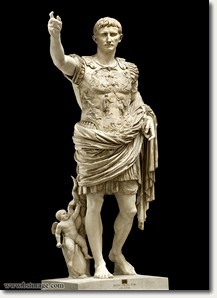 1 1 |
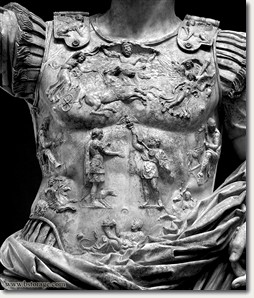 2 2 |
|
The Augustus of Prima
Porta (photos 1 & 2), now in the Vatican Braccio Nuovo, appears to be based on the
Doryphorus of Polykleitos, which portrays what Polykleitos saw as
the ideal proportions for an athlete. The Augustus statue shows him
as a victorious general making a speech, posed in the traditional
controposto manner.
It was discovered at Prima Porta, near Rome in 1863, in the villa
belonging to Augustus's wife Livia. It is probably a copy of a bronze
original from 20 B.C. The copy dates to the early reign of Tiberius
(~15 A.D.) and includes, on its breastplate, scenes of the Roman
victory over the Parthians, including a protagonist who may be
Tiberius.
|
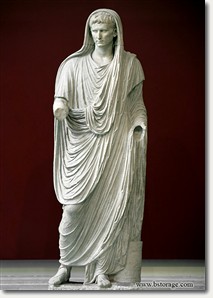 3 3 |
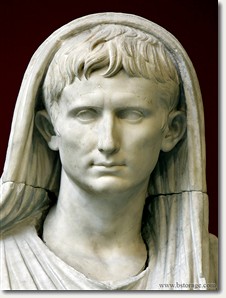 4 4 |
|
Augustus as Pontifex
Maximus, from Via Labinaca (photos 3 - 6). This statue is usually dated to sometime
after 12 BC, on the basis of the hair style (similar to that of the
Prima Porta Augustus), other stylistic elements, and his finally
accepting the office of chief priest upon the death of Lepidus
around 13 BC. The head is carved from Greek marble and the body from
Italian marble. Museo Nazionale Romano. |
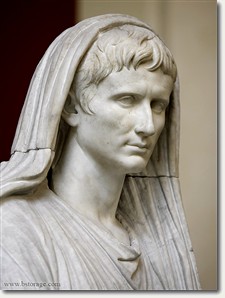 5 5
|
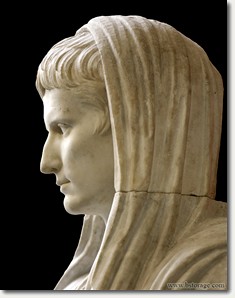 6 6
|
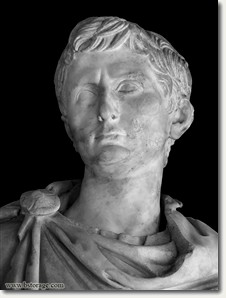 7 7
|
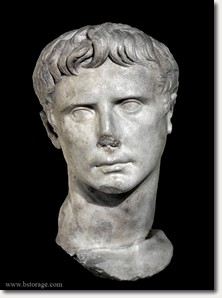 8 8
|
|
Octavian (later Augustus, photo 7)
from the period 35 - 29 BC. Note the different hair style, identified by Vierneisel and Zanker as "Octavianstypus".
Musei Capitolini inv. MC413 (MC0413).
|
Portrait of Augustus in Greek
insular marble (photo 8). Museo Capitolino Montemartini (Gasworks) inv. 2394. Found in excavations
on Via del Mare near the Theater of Marcellus in 1937. The head is almost
surely recarved from a portrait of Caligula. The forehead has been cut back
to allow definition of Augustus's Prima Porta-style of coiffure. Rough,
broad chisel marks are visible just below the hair line directly above the
right pupil and at the hair line directly above the left exocanthion (point
at the outer commissure of the eye fissure). |
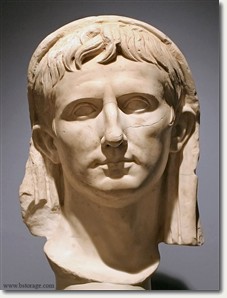 9 9
Prima Porta-style head of Augustus from Chiusi |
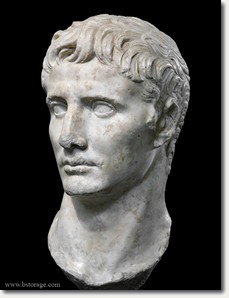 10 10
|
|
Portrait of Augustus thought to
be reworked from a portrait of Caligula. Claw-chisel marks on the nape of the
neck seem to betray removal of Caligula's "shag" style haircut.
Our anthropometric analysis of the head opens
some questions about this hypothesis. J. Paul Getty Museum
inv. 78.AA.261.
|
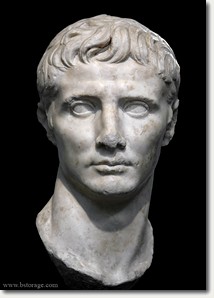 11 11
Frontal view of Getty Caligula/Augustus |
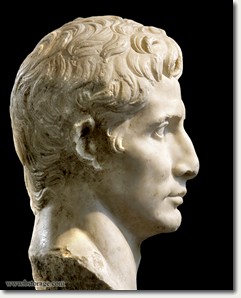 12 12
Profile of Getty Augustus |
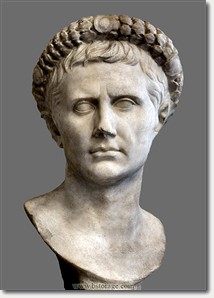 13 13
Augustus. Capitoline Museum Inv. 495.
From Via Merulana, Rome. |
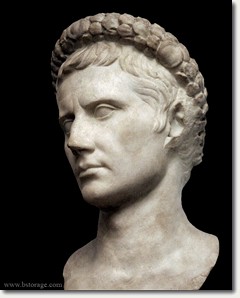 14 14 |
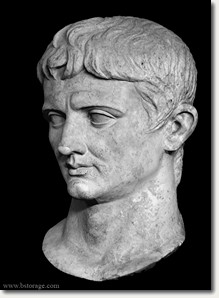 15 15
|
 16 16 |
|
Portrait of Augustus for
Caere (photos 15 & 16), recut from a portrait of Caligula. Note bulges over the
eyebrows where the forehead has been cut back to accommodate
conversion of Caligula's hair line to that of Augustus (Prima Porta
configuration). Even in this small image, you can see the difference
between the rough surface of the reworked forehead (just above glabella) and the smooth surface of the neck and cheek. Vatican
Museum inv. 9953. |
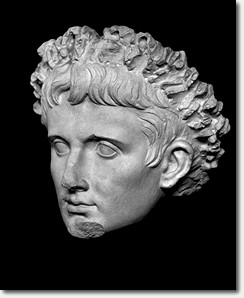 17 17
Cast of head of Augustus, found in Cerveteri
in 1840. Original in Louvre (MA 1245). |
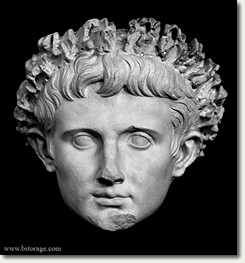 18 18 |
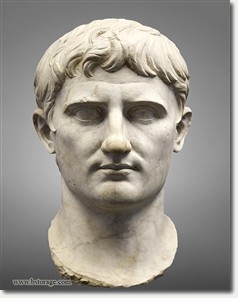 19 19
Augustus - Vatican Inv. 10222 |
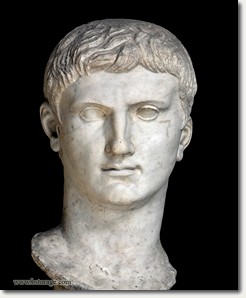 20 20
Colossal head of Augustus found in
Veii in 1811. Vatican inv. 1642. |
Sources:
Charles Brian Rose. Dynastic Commemoration and Imperial Portraiture in the
Julio-Claudian Period (Cambridge Studies in Classical Art and Iconography),
Cambridge University Press, 1997. ISBN-13: 978-0521453820.
Eric R Varner.
Mutilation and
Transformation: Damnatio Memoriae and Roman Imperial Portraiture, 2004.
ISBN-13: 978-9004135772
Eric R Varner.
From Caligula to
Constantine: Tyranny & Transformation in Roman Portraiture, 2001. ISBN-13:
978-1928917014.
Klaus Vierneisel and Paul Zanker.
Die Bildnisse des Augustus (Munich 1979).
Paul Zanker.
The Power of Images
in the Age of Augustus, 1990. ISBN-13: 978-0472081240.
|




















